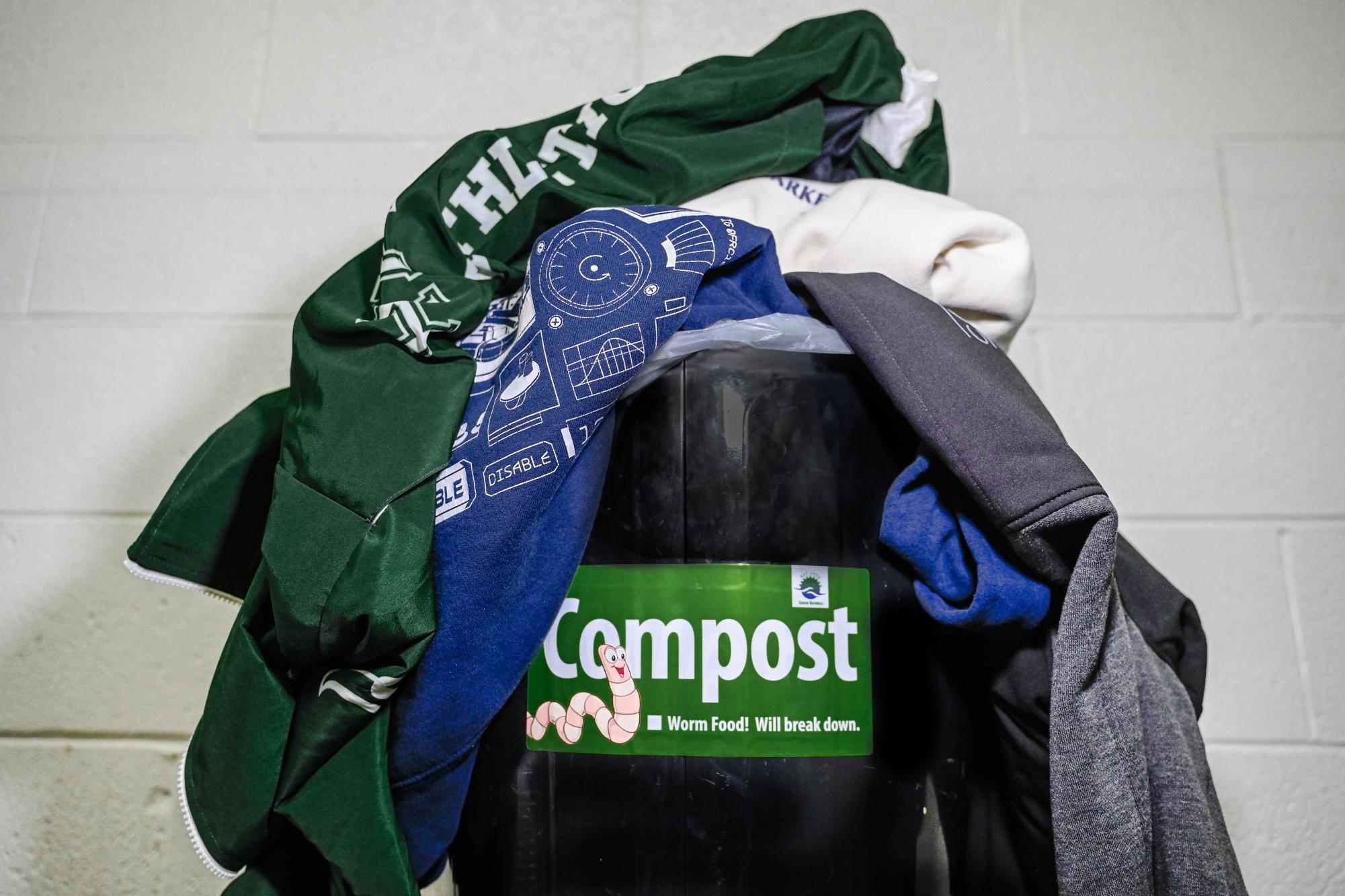DECA tote bags. Robotics fedora hats. Conservatory hoodies. Year after year, clubs and programs distribute swag to members and attendees. While students sometimes sport these items around school, some of these items also pile up in closets, rarely seeing the light of day. The excess merchandise raises the question: how sustainable is swag?
Organizations that produce merch risk leaving members with an excess of shirts, hoodies and miscellaneous items that go unused and are not repurposed for future years.
“The school’s goal in general is to limit the waste that we produce, so we look at the goal of the clothing or swag — if it is necessary to the fulfillment of the organization’s mission,” Director of Student organizations Eric Kallbrier said. “That is different from an organization that wants material just to provide a benefit to the members.”
While past administrative rules permitted any organization to purchase swag, there is currently no clear policy set in place. Instead, requests are evaluated on a case-by-case basis, allowing some groups to continue distributing merch while others, especially clubs, can’t.
DECA CEO Sanaa Bhorkar (12) spoke about DECA’s motives for giving merch to participants, starting with the DECA Launch shirt for frosh.
“We hope if they wear [the Launch shirt] and their friends wear it, it [creates] more publicity about DECA,” Sanaa said. “But then from there, every single piece of merch we get is more celebratory. For SVCDC we give out our hoodies, and it’s like a ‘congratulations.’”
However, creating these items takes a toll on the environment. Green Team President Shreyas Chakravarty (12) explained the inevitable footprint involved in acquiring swag.
“There’s a tremendous amount of water that goes into producing, especially the sweatshirts and sweatpants that you see a lot of clubs using,” Shreyas said. “Then there’s a gigantic carbon cost, because they’re all printed, shipped and then people just don’t wear them. It’s a gigantic waste of water, carbon emissions, textiles, labor and money.”
Programs often distribute merch without considering whether students actually want the items they are offering, instead ordering bulk and distributing until they run out. Departments like performing arts, athletics, and speech and debate provide swag to members every year, especially with every new production and season, resulting in members receiving duplicates if they continue for multiple years.
Sophomore Samaara Patil spoke about the amount of merch she has received from various programs yet does not use, explaining how she only wears these items as a last resort.
“I have conservatory swag, DECA swag, TEDx swag, a bunch of sports swag and speech and debate [swag],” Samaara said. “For me, it’s really easy to be like, ‘Oh, free stuff,’ and take it, but you don’t even realize that you’re never going to wear it.”
Some organizations have worked towards using more sustainable sourcing and limiting excess orders.
DECA advisor Juston Glass explained how the program is prioritizing finding producers who ensure a clean production process and is pivoting production to focus on items club members will use.
“We’re looking for organic cotton and none of the synthetic materials that can harm the environment,” Glass said. “Our tote bag, which students can reuse to carry goods while shopping, is 100% cotton canvas made from natural cottons, and they’re biodegradable and reusable. It offers a more eco-friendly alternative to single use bags, and we’re able to use them across the campus.”
DECA also turned to companies that utilize less water in their production process and pure pigment dye for their products.
Sanaa stressed that as a DECA chapter with over 150 members, they have the responsibility to take a lead in sustainability efforts regarding swag.
“We’re such a big part of Harker that it’s important for us to set an example that we are also being sustainable, we’re not wasting a bunch of material and we’re not going after inefficient or non-sustainable products because what we do has a really big impact on the rest of the school,” Sanaa said.
While students are the ones that accumulate merch, parents often end up with the burden of taking care of these items. Sustainability Committee member Diana Moss spoke about swag from a parent’s perspective.
“As a former Harker parent, I’ve been on the receiving end,” Moss said. “I had two kids who did performing arts and sports, and I cannot tell you the amount of stuff that we ended up getting. My daughter is 32 and my son is 28, and my husband and I are still wearing their clothes from their Harker years.”
Moss, alongside other faculty members, abolished yearly custom-designed class shirts for non-seniors after noticing that students were leaving these items behind. They are currently trying to influence Harker merch-distributing organizations by urging them to stop producing t-shirts and other items that end up going to waste.
Instead, Moss encourages people to reuse and repurpose clothing, citing how Green Team members return their club t-shirts after they graduate so that future students can wear them. She also recommends only giving items to active members of the organization. In the end, however, she hopes students will take initiative in leading the switch to sustainability.
“The conversation really needs to start with the kids,” Moss said. “Kids need to realize that they have a lot more power here than they think and that just because something has always been done a certain way doesn’t mean that it has to continue to be done.”





